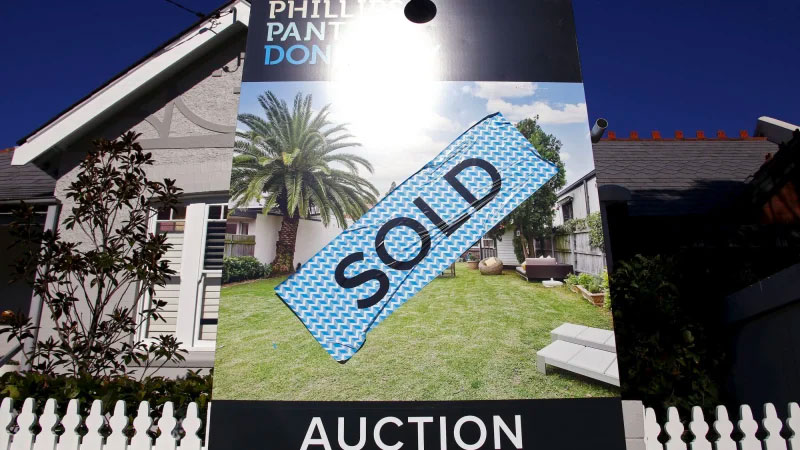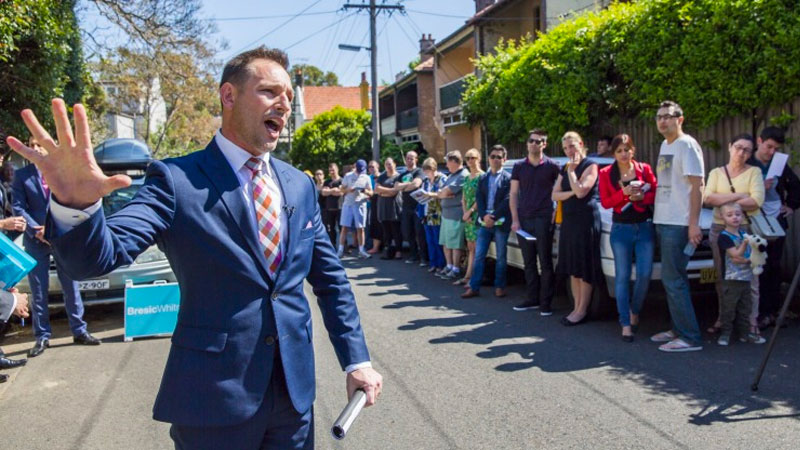Auction Withdrawals Reveal Cracks in Housing Market
Coronavirus social distancing measures could start harm residential property prices with 45 per cent of auctions withdrawn from the market.
On what would have been one of the busiest weekends of the year, with 3,092 capital city homes scheduled for auction, the weekend's results were weighed down again by withdrawn auctions.
Sydney and Melbourne auction clearance rates remained low at the weekend in signs the coronavirus may be hitting housing demand, with 45 per cent of the auctions that were set to take place withdrawn and 84 per cent of auctions sold prior to the event.
According to property researcher Corelogic, withdrawn auctions typically comprise less than 6 per cent of all auctions from week-to-week.
The drop off in auctions follows the federal government's ban on large public gatherings, with bidders opting to head online instead with 84 per cent of auctions sold prior to the event.
Agents have quickly on-boarded new means to undertake digital auctions through a variety of online platforms.

Of 3,092 homes that were set to go under the hammer nationwide, an auction clearance rate of 48 per cent was recorded by Corelogic.
There were 1,437 auctions scheduled in Sydney this week, returning a clearance rate of 46.9 per cent while the online-only clearance rate for Sydney, was 41.2 per cent, from 453 that went ahead.
Melbourne, which had almost 1,248 auctions scheduled returned a clearance rate of 54.7 per cent while in Brisbane 27.9 per cent of auctions cleared from 86 results.
The result comes comes off the back of the previous week’s final figure of 37.3 per cent, which coincided with the global financial crisis (GFC), and was lowest final clearance rate recorded since Corelogic commenced reporting in 2008.

Corelogic said that over the coming weeks it will be highly likely scheduled volumes will lower as vendors either convert their listings to private treaty method or hold off on selling their property until conditions and confidence improve.
Corelogic's price index remained positive through March, up 0.7 per cent, but with more auctions likely to withdraw and transactions likely to dry up amid a nationwide lockdown, the housing market is preparing for its biggest test in over a decade.
Analysts are now expecting a sudden plunge in volume, due to stifled uncertainty due to the wave of layoffs sweeping the country, could cause property prices to tumble.
Ratings agency Moody’s expects a significant increase in mortgage defaults as a result of the rolling shutdowns with industries including hospitality, retail and entertainment experiencing mass worker layoff.
How house prices have fared in times of crisis
While sellers have taken a more cautious approach over recent weeks, homebuyers hoping the knock on effects from the coronavirus could see a drop in property prices could be disappointed.
According to CBRE's Residential Market Update, Australia's property market has traditionally fared relatively well during global economic shocks.
Australian property prices were eventually boosted by the 1987 Black Monday sharemarket crash that shaved 23 per cent off the sharemarket's value.
Before the GFC, interest rates were rising in a bid to control strong inflation and as mortgages got more expensive, housing prices were falling.
During the GFC house and unit sales dropped from record highs reached in 2007 into a trough in 2008, with house sales volumes dropping by 26 per cent and units by 24 per cent.
Prices and volumes rebounded strongly in 2009 with house sales volumes lifting by 19 per cent and units by 29 per cent.
In the March 2009 quarter, the national median reversed its falls to edge up by 0.1 per cent, before jumping 3.5 per cent in the June quarter, another 3.9 per cent in September and a strong 4.6 per cent in the three months to December 2009.
CBRE said that overseas travel restrictions would now have a direct effect on population growth and in turn would ameliorate some of the immediate impacts on the already low supply pipeline.
“Net overseas migration presently accounts for a little over 60 per cent of Australia's population growth at 232,000 over the year to September 2019,” CBRE said in a statement.
“This generates a significant demand for housing, particularly in major capital cities.
“Even with a 50 per cent drop in net overseas migration in 2020 and a 25 per cent drop in 2021, we will still see undersupply topping 30,000 by the end of 2021, ramping up quickly when the migration intake rises again.”














